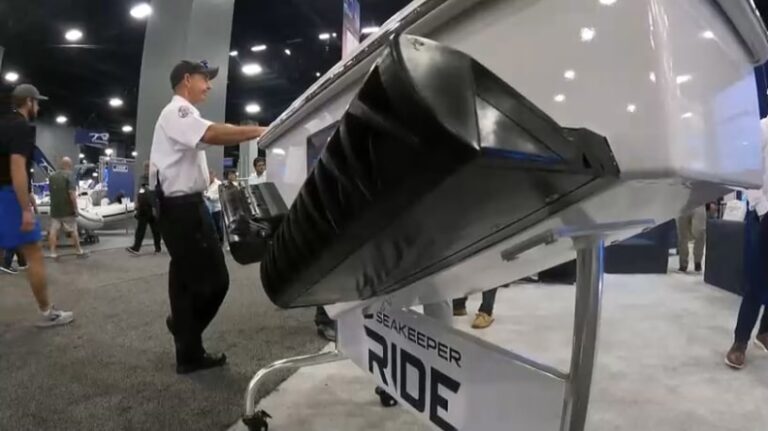The Benefits of Dynamic Trim Control Systems
Publisher: Saltwater Sportsman
Written By: Jim Hendricks
The Benefits of Dynamic Trim Control Systems
Advanced attitude-control systems that automatically fine-tune the ride based on sea conditions are improving handling.
Peering into the misty future and trying to predict how saltwater fishing boats of tomorrow will perform can prove tricky. Yet one future trend in this area appears clear: Boats of the future will ride more smoothly and comfortably than those of today.
This is not just because hulls increasingly feature more sophisticated designs, but also due to advanced attitude-control systems that automatically fine-tune the ride based on sea conditions. These are unlike the familiar horizontal trim-tab plates. Brands on the cutting edge include Humphree, Zipwake and Seakeeper.
Humphree and Zipwake use vertical composite blades that deploy downward to create hydrodynamic lift by intercepting water flow under the boat.

On the other hand, the Ride system from Seakeeper uses a pair of bladelike controllers (shown above). Electrically powered rotary actuators adjust the blades up and down with mind-boggling speed.
“Seakeeper Ride’s proprietary, rapid-deployment rotary blades make 100 adjustments every second,” says Andrew Semprevivo, president and CEO of Seakeeper. Those adjustments are based on taking 1,000 measurements every second, and the controllers operate at speeds up to 300 mm per second, says Semprevivo.
Engineered for boats up to 42 feet in length, Ride can eliminate up to 70 percent of pitch and roll while the boat is underway, according to the company, though each boat will respond differently. The sealed electric controllers are housed outside the transom. Only one hole is required to pass the power cable into the bilge area. The module itself attaches with a high-strength adhesive such as Plexus.
The actuators interface with an electronic three-axis sensing software module that understands how the boat is behaving in terms of pitch, roll and yaw, then sends commands to the actuators to instantaneously control bow oscillation and roll. It can also learn the boat and sea conditions to deliver the best ride. A helm keypad turns the system off and on, but Ride also networks with compatible multifunction touchscreen displays.
To explore the difference Ride can make, we installed a system on a 21.5-foot Cabo 216 saltwater fishing boat and ran it at speeds up to 36 mph and into 3-foot seas. With the automatic function off, the bow rose and fell at the mercy of the waves. This pounding is not only uncomfortable, but also robs the boat of efficiency.
However, with Ride in auto mode, bow oscillation was minimal, allowing the boat’s sharp entry to cut the waves when necessary and the bow to rise slightly to skim the water between waves. Ride eliminated about 45 percent of oscillation on this boat, resulting in far greater crew comfort.
To test for correcting a list, we shifted crewmembers from side to side. Without the auto function, the boat developed a serious list. With the auto function on, the boat never departed from an even keel.
Turns feel a bit different too. In auto mode, the boat still leans into turns, but not nearly as much as without it, boosting the comfort level. I asked Semprevivo if Ride can smooth out an inherently rough-riding boat. “It will make a rough-riding boat less rough and a good-riding boat even better,” he says. For boating anglers looking for greater comfort in lumpy seas, it looks like a smooth run lies ahead.




